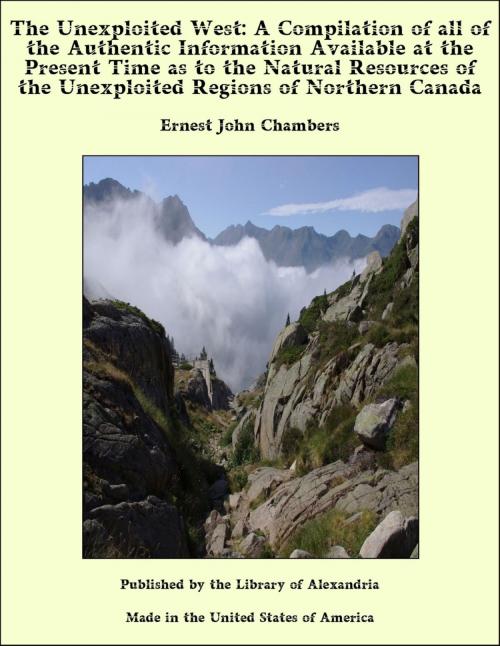The Unexploited West: A Compilation of all of the Authentic Information Available at the Present Time as to the Natural Resources of the Unexploited Regions of Northern Canada
Nonfiction, Religion & Spirituality, New Age, History, Fiction & Literature| Author: | Ernest John Chambers | ISBN: | 9781465611017 |
| Publisher: | Library of Alexandria | Publication: | March 8, 2015 |
| Imprint: | Language: | English |
| Author: | Ernest John Chambers |
| ISBN: | 9781465611017 |
| Publisher: | Library of Alexandria |
| Publication: | March 8, 2015 |
| Imprint: | |
| Language: | English |
When in 1867 the four principal British provinces in the eastern portion of North America were confederated under the British North America Act and became the original Dominion of Canada, the vast regions of the west vaguely known under several designations such as the “Hudson’s Bay Territory,” the “Northwest Territory” and “Rupert’s Land,” and extending from the United States boundary to Arctic sea, and from the western frontier of Ontario, James bay and Hudson bay to Rocky mountains, remained under the rule of the Hudson’s Bay Company. The Fathers of Confederation had in view, however, a union of all the British possessions on the continent, and one of the measures passed at the first session of the first parliament of the new Dominion provided for the opening of negotiations for the union of the Hudson bay territory with the confederated provinces. Thanks largely to the diplomatic offices of the British government, the rights of the Hudson’s Bay Company were eventually bought out by Canada, and this vast territory, estimated at upwards of two million three hundred thousand square miles, was transferred to the Dominion of Canada in the year 1867. The cash consideration obtained by the company from the Dominion for the relinquishment of its rights and titles was the sum of three hundred thousand pounds sterling; but there was also a provision for the retention by the Company of blocks of land adjoining each of its stations; and the right was allowed the company for fifty years, from 1870, to “claim in any township or district within the fertile belt in which land is set out for settlement, grants of land not exceeding one-twentieth part of the land so set out.” For the purpose of the agreement the “Fertile Belt” was described therein as being bounded as follows:—“On the south by the United States boundary; on the west by Rocky mountains; on the north by the northern branch of the Saskatchewan; on the east by Lake Winnipeg, Lake of the Woods, and the waters connecting them.”
When in 1867 the four principal British provinces in the eastern portion of North America were confederated under the British North America Act and became the original Dominion of Canada, the vast regions of the west vaguely known under several designations such as the “Hudson’s Bay Territory,” the “Northwest Territory” and “Rupert’s Land,” and extending from the United States boundary to Arctic sea, and from the western frontier of Ontario, James bay and Hudson bay to Rocky mountains, remained under the rule of the Hudson’s Bay Company. The Fathers of Confederation had in view, however, a union of all the British possessions on the continent, and one of the measures passed at the first session of the first parliament of the new Dominion provided for the opening of negotiations for the union of the Hudson bay territory with the confederated provinces. Thanks largely to the diplomatic offices of the British government, the rights of the Hudson’s Bay Company were eventually bought out by Canada, and this vast territory, estimated at upwards of two million three hundred thousand square miles, was transferred to the Dominion of Canada in the year 1867. The cash consideration obtained by the company from the Dominion for the relinquishment of its rights and titles was the sum of three hundred thousand pounds sterling; but there was also a provision for the retention by the Company of blocks of land adjoining each of its stations; and the right was allowed the company for fifty years, from 1870, to “claim in any township or district within the fertile belt in which land is set out for settlement, grants of land not exceeding one-twentieth part of the land so set out.” For the purpose of the agreement the “Fertile Belt” was described therein as being bounded as follows:—“On the south by the United States boundary; on the west by Rocky mountains; on the north by the northern branch of the Saskatchewan; on the east by Lake Winnipeg, Lake of the Woods, and the waters connecting them.”















